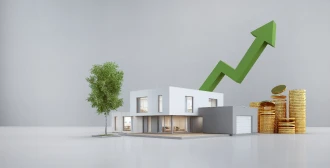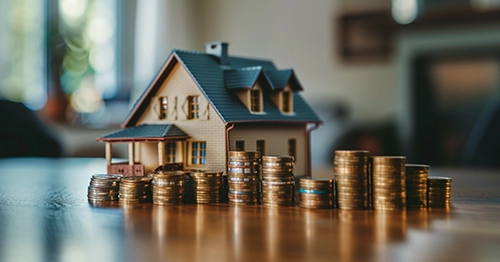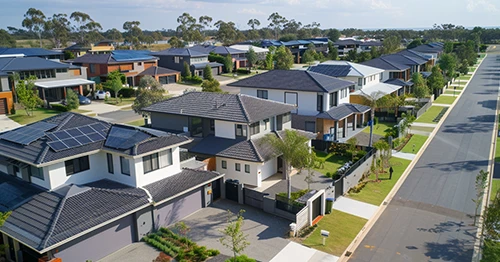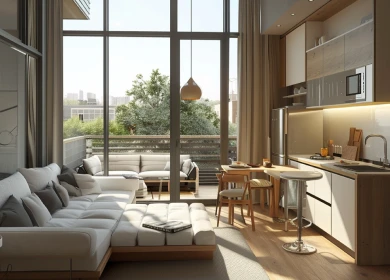Updated: 23 Dec, 2024
CoreLogic’s Home Value Index recorded a second straight monthly decline in June, falling 0.6%. Dwelling values in Sydney and Melbourne fell 1.6% and 1.1%, respectively. The values in Hobart and regional Victoria fell 0.2% and 0.1%, respectively, in June.
Every capital city and broad rest-of-the state area has moved past its peak rate of growth, as positive trends eased across the remaining markets. Brisbane’s growth flattened to 0.1%. Adelaide was the only capital city that recorded significant monthly growth, at 1.3%.
CoreLogic research director Tim Lawless said, “Housing value growth has been easing since moving through a peak in March last year, when early drivers of the slowdown included rising fixed-term mortgage rates, an expiry of fiscal support, a trend towards lower consumer sentiment, affordability challenges and tighter credit conditions.”
How Far Will Housing Values Fall In 2022?
Lawless explained that the surging inflation and rising cash rate have added to the downwards trajectory of the housing market. Since the cash rate hike in May 2022, most housing markets have experienced a sharp reduction in their rate of growth.
“Considering inflation is likely to remain stubbornly high for some time, and interest rates are expected to rise substantially in response, it’s likely the rate of decline in housing values will continue to gather steam and become more widespread.”
The combined regional index remained in the positive growth range in June 2022 but rose only 0.1%. This reduced the quarterly growth rate for the regions from a peak of 6.6% in April last year to 2.0% over the three months to June. The combined capital cities index was down 0.8% over the June quarter, falling sharply from its peak of 7.1% over the three months to May last year.
How Interest Rates Affect The Housing Market
Australia’s housing market outlook looks bleak, as the trajectory of housing values is heavily dependent on interest rates. Lawless forecasts that the cash rate could rise beyond the pre-pandemic 10-year average of 2.56%.
“Under this scenario, the average variable mortgage rate for new owner-occupier loans would be approximately 4.96%, more than double the rates in April, adding roughly $720 per month to a $500,000 mortgage or $1,439 per month to a $1 million loan,” he said.
Households are more sensitive to the rising rates the higher the level of debt they hold. The household debt-to-income ratios from the RBA were at a record high in the March quarter. The ratio of household debt to disposable income was 187.2, 77% of which was mortgage debt.
Lawless explained, “Lower savings and higher expenses, along with rising interest rates, will have an ongoing impact on borrowing capacity for households. Reduced borrowing capacity is likely to further diminish housing demand and potentially deflect more homebuyers towards the middle or the lower end of the pricing spectrum.”
The higher interest rates and rising inflation will affect consumer sentiment. Lawless explained that the number of home sales will drift lower as demand cools and lenders become more cautious.
Property Market Highlights
Here’s what happened in Australia’s property market in June 2022.
- Across the largest capitals, unit markets held their value better than houses. Sydney experienced a 3% drop in house values in the quarter to June, compared with a 2.1% fall for units. Melbourne had a 2.4% drop in house values, compared with 0.5% for units.
- Since the start of the pandemic in March 2020, capital city unit values have gone up 9.8% compared with 24.7% for houses, meaning there is now better affordability across the medium- to high-density sector.
- The national advertised stock levels were 7.4% lower, relative to 2021; however, the total advertised supply in Sydney and Melbourne was 7-8% above levels recorded a year ago and were above the five-year average.
- Hobart’s advertised stock levels were 48.4% higher than last year, and Canberra’s were 20.7% higher.
- In Adelaide, in contrast, housing conditions remain strong. Advertised stock levels were 16.9% lower than last year and nearly 40% below the five-year average.
- Home sales through the June quarter were 15.9% lower than a year ago, but 13% above the five-year average, CoreLogic estimates.
- Selling conditions were tough, as the clearance rate for capitals has been below 60% since the last week of May. Selling times have been longer and there have been more vendors discounting rates across private treaty sales.
- Rents climbed 0.9% in June. The annual growth rate is now 9.5%, which is the highest rate since December 2007, when unprecedented overseas migration pushed rental demand even higher. The strong rental conditions now are due to international borders reopening, which has placed added upwards pressure on rental demand.
- Rents have been rising faster than housing values for the past five months. After a record low rental yield of 3.21% in January and February of this year, the average gross yield has now increased to 3.33%.
- Rental markets are forecast to remain tight, which could cause rental growth to stay ahead of growth in housing values. This would lead to a rapid recovery in rental yields.





